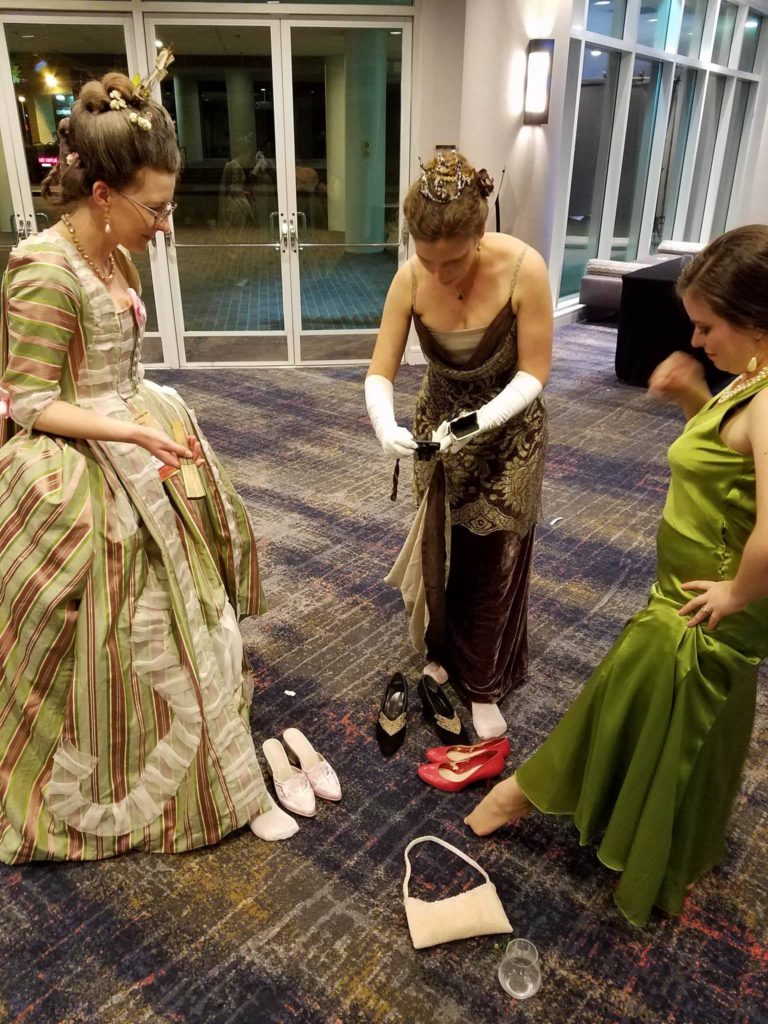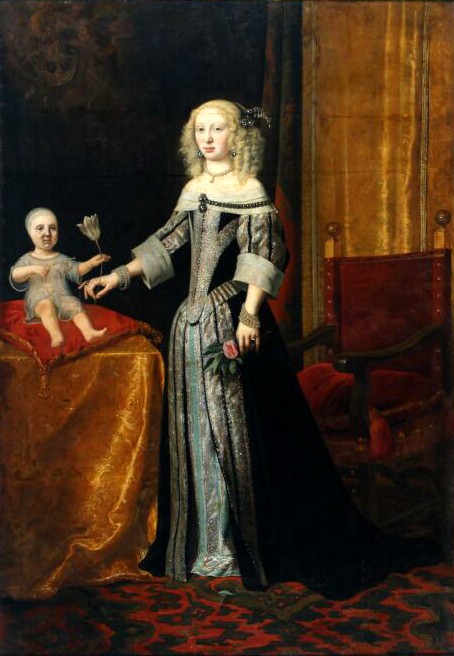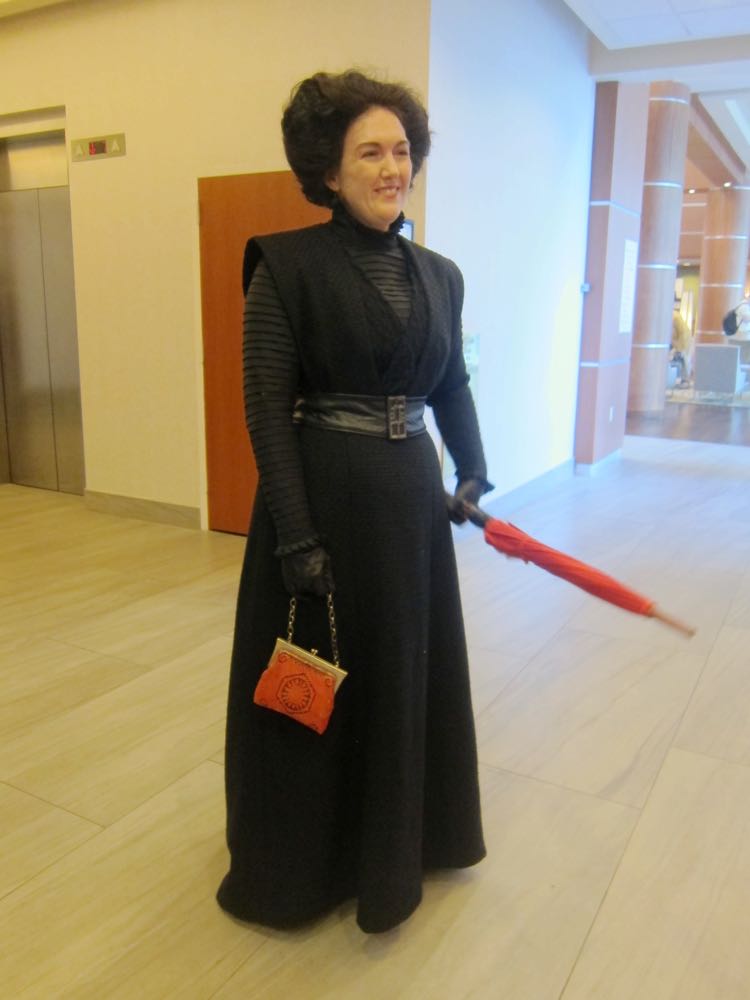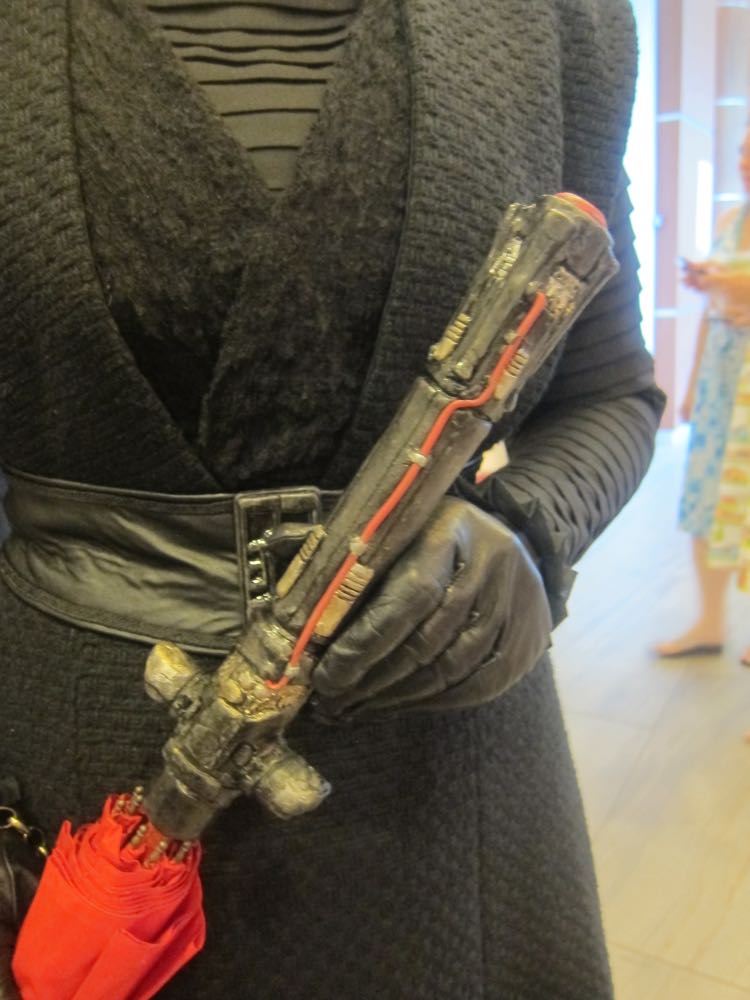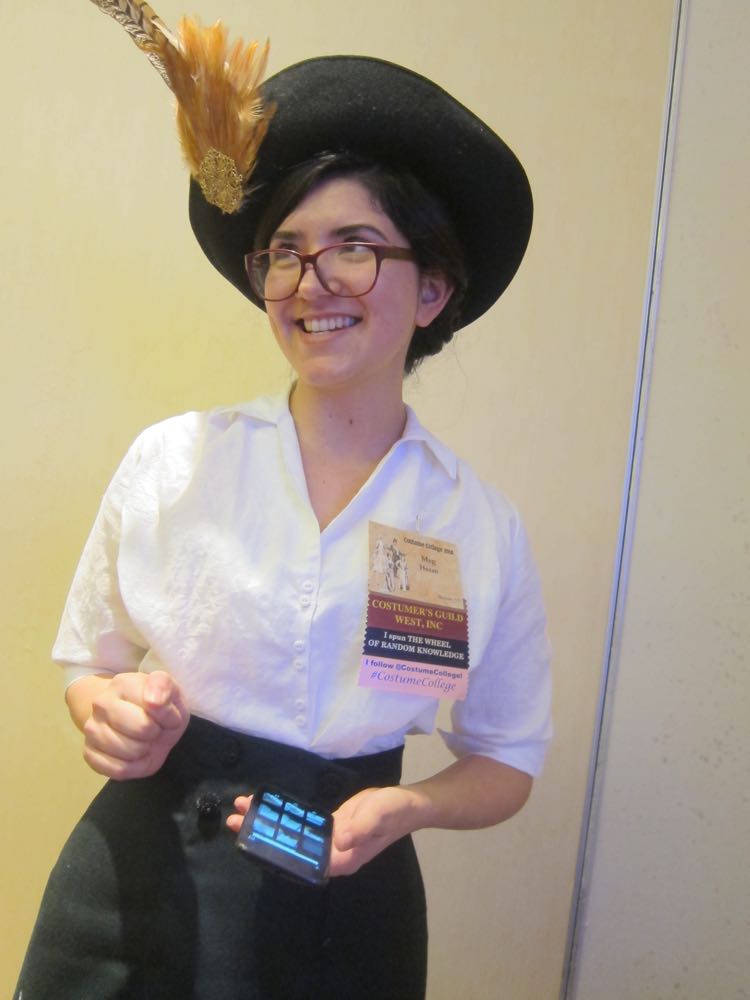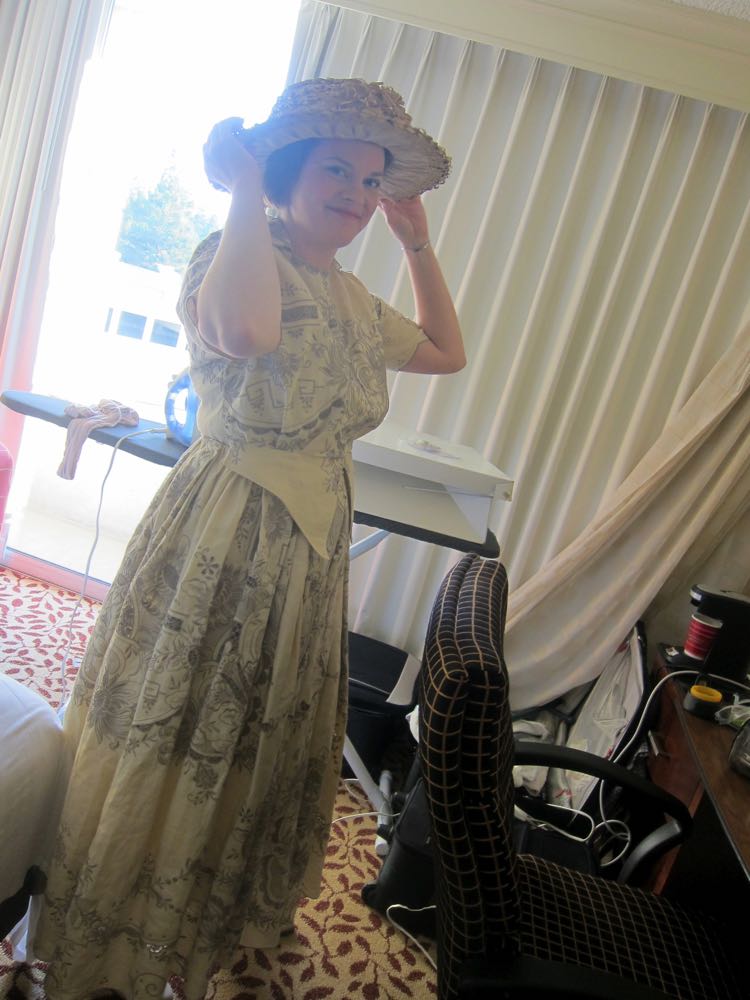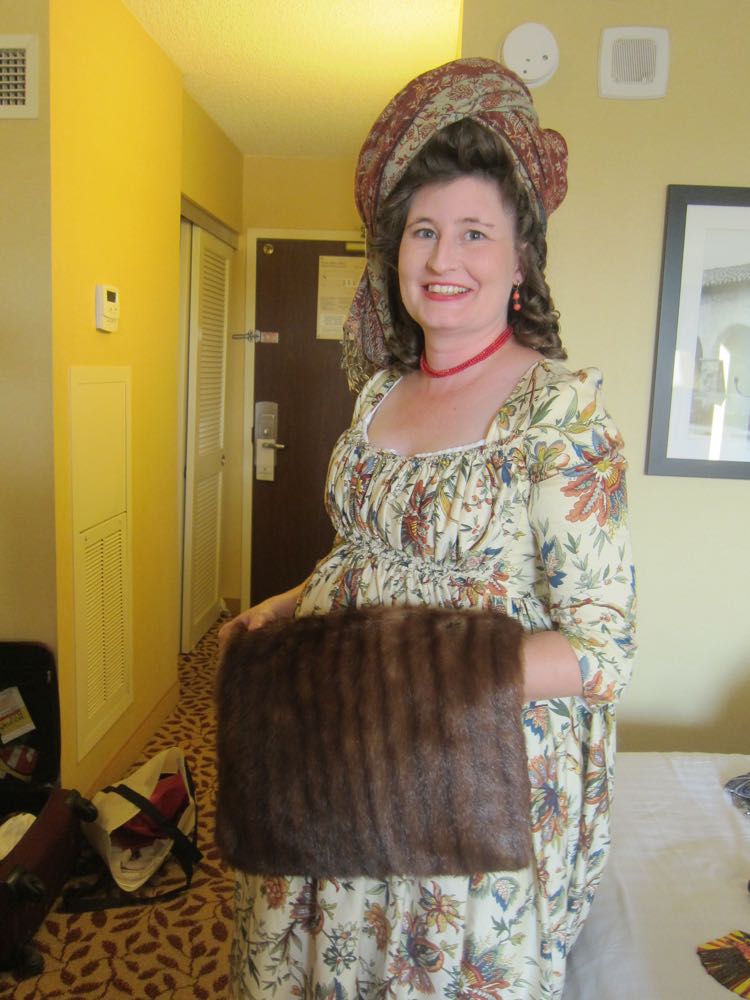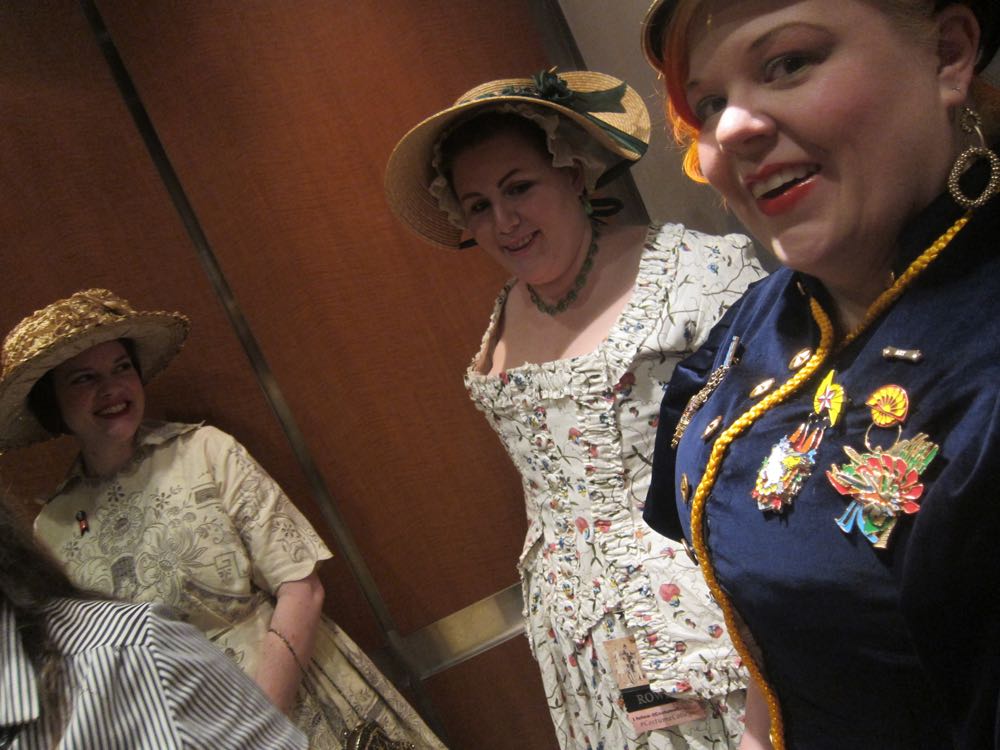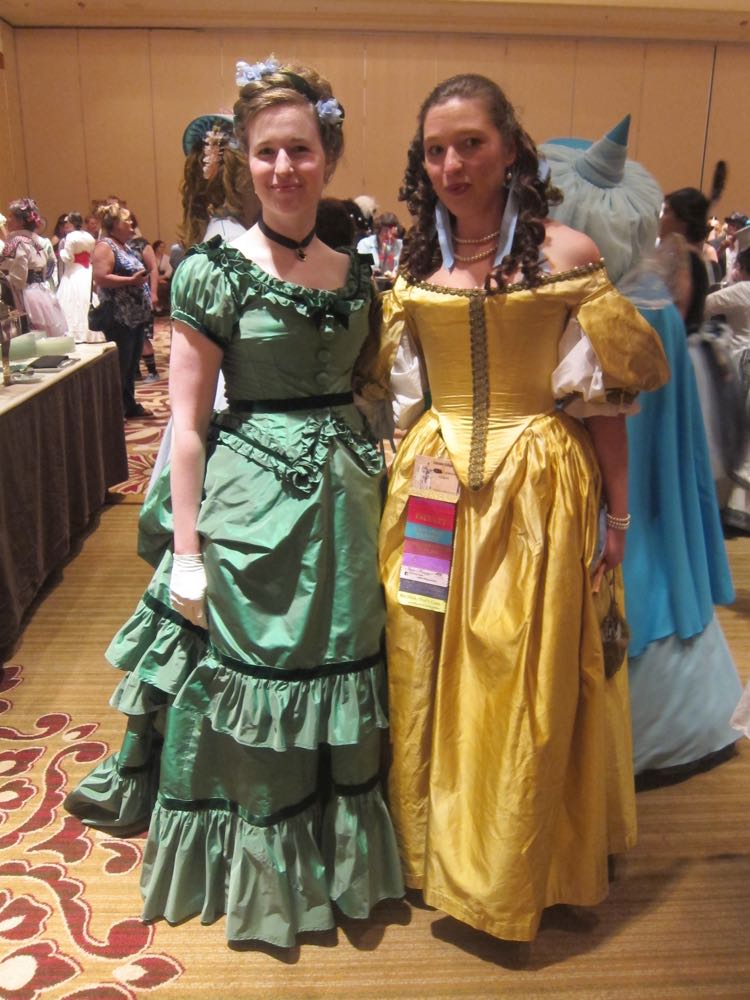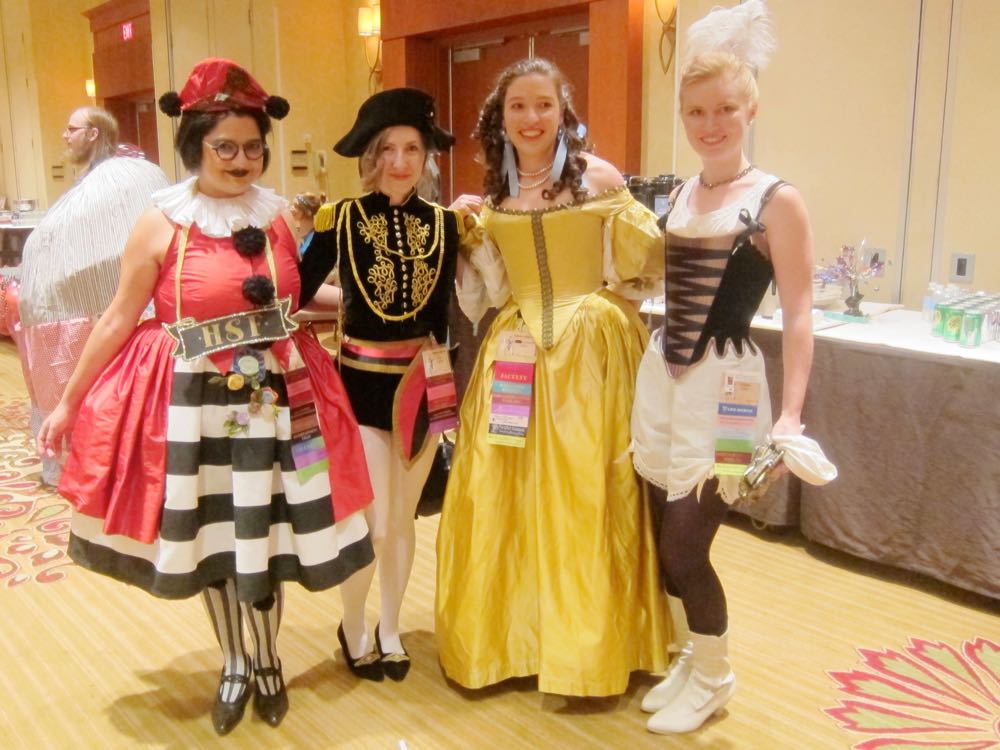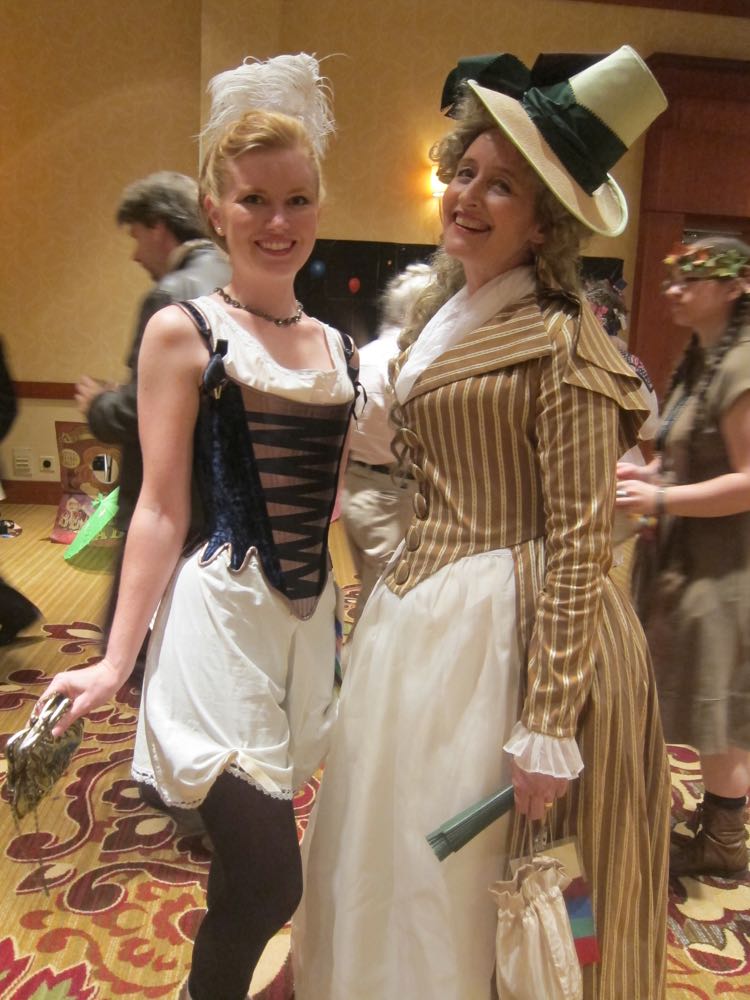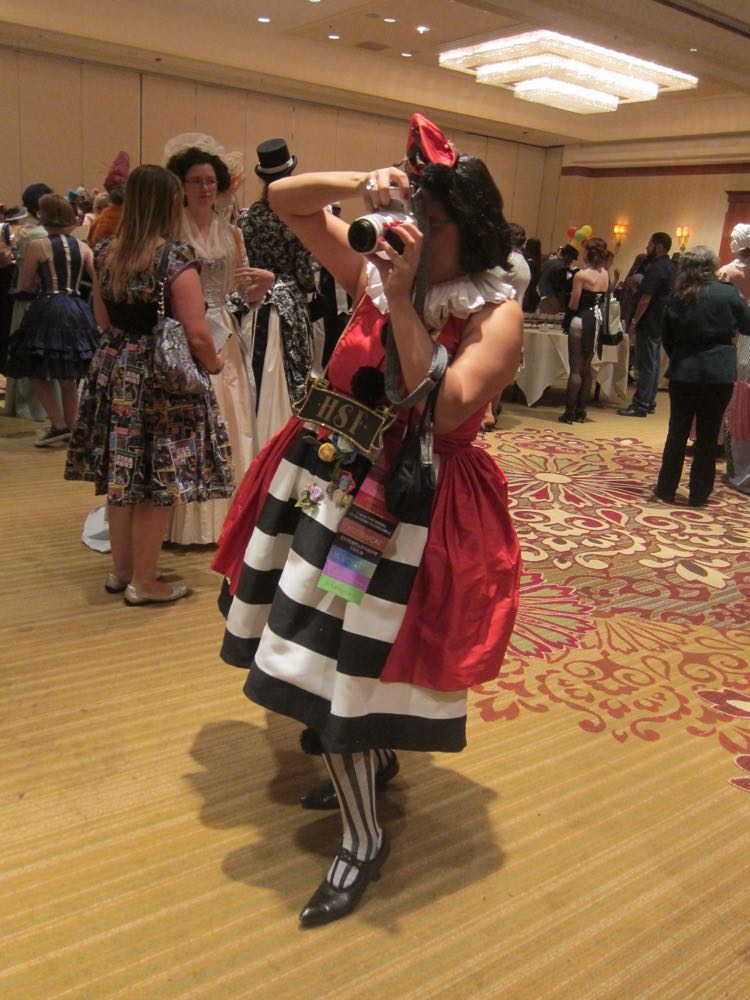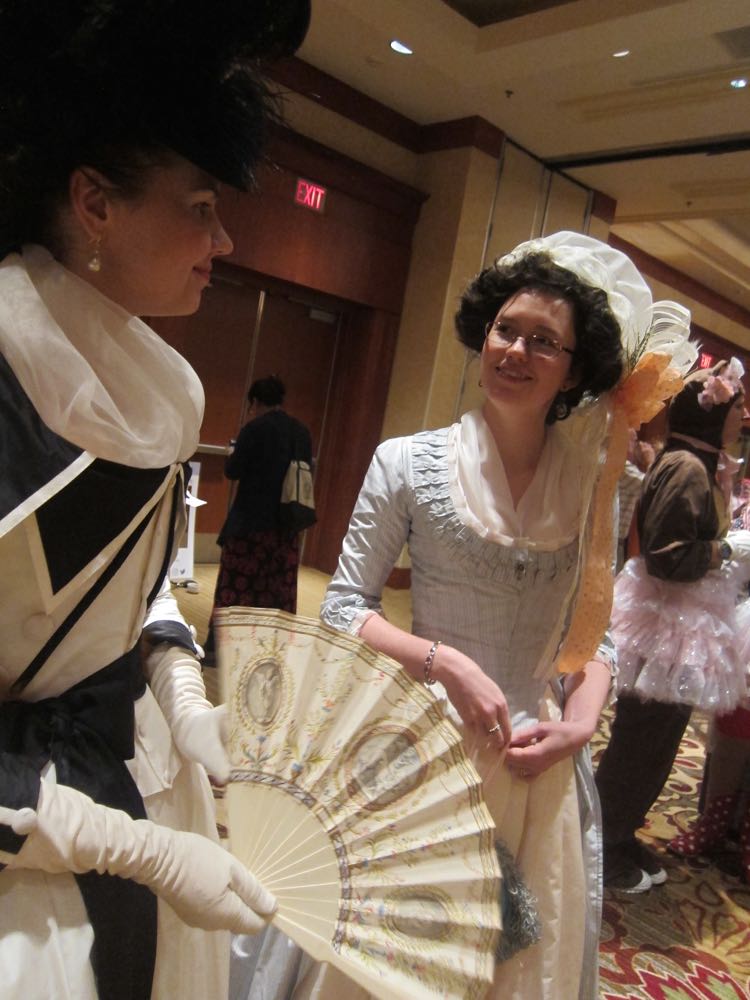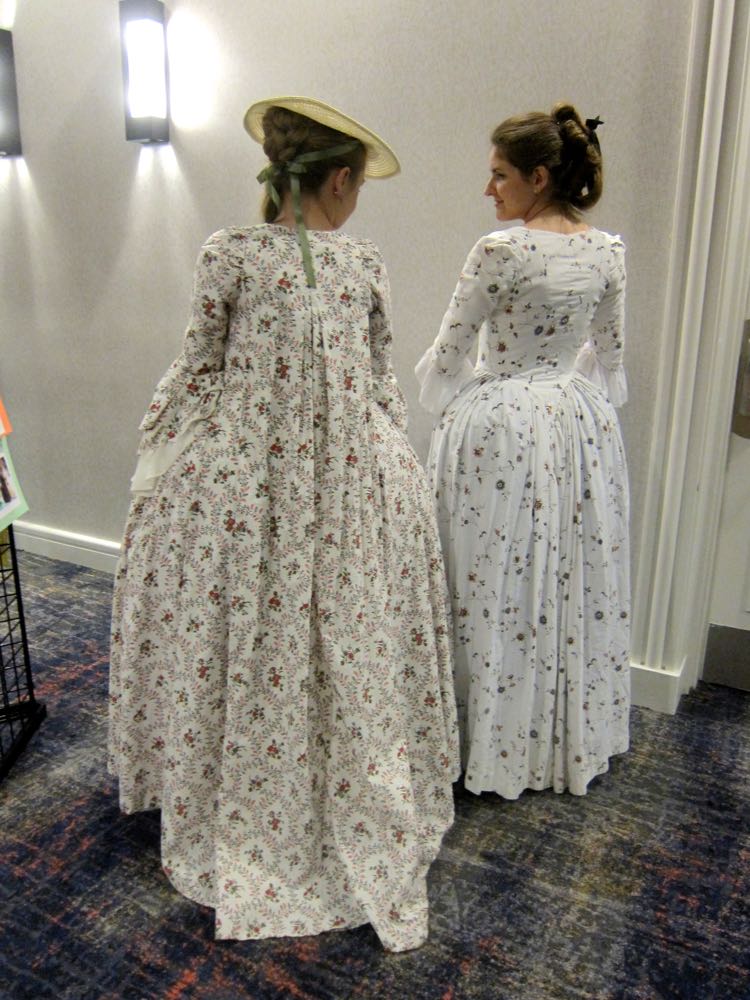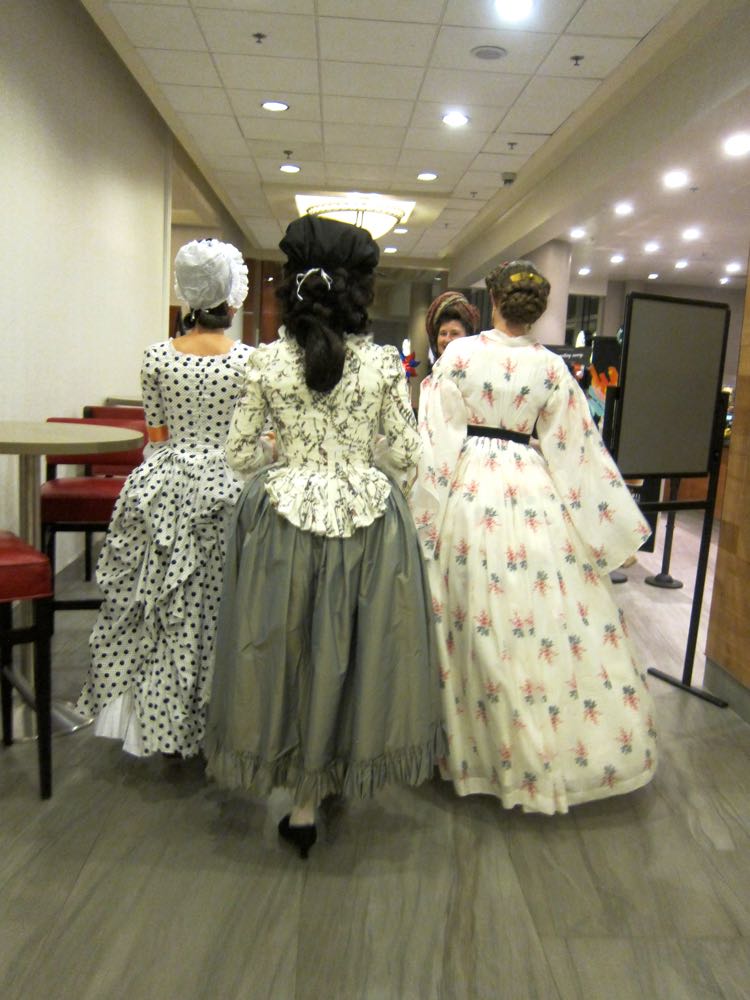There were SO MANY wonderful moments at Costume College this year, and I’ll be blogging lots of them, but for now I just want to share a little one that really shows how fun and fabulous the event is.
There is a tradition among many costumers of taking ‘shoe shots’: images of everyone standing in a circle, pointing their toes inwards and showing off their shoes. I meant to take some, but forgot all weekend! (I’ve definitely seen ones from other costumers from CoCo).
Very late at night on Saturday, at the absolute end of the Gala, I ended up talking to Molly of Avant Garb (who started the night in a near-perfect* Kaylee dress recreation!) and Meg of Nutmeg Sews** about how amazing everyone’s outfit was and which 1,000 dresses were our favourites, etc etc. It was late, and we’d danced and posed and generally looked gorgeous all night, so, without really thinking about it, we all ended up taking off our shoes and standing there in our fancy gowns and historical stockings.
The lovely Maria, who is in the Historical Sew Fortnightly, noticed our dreadful indiscretion, and came up to tell us we needed a photo of the discarded shoes, as an actual accurate representation of what really happens at CoCo.
So the only shoe photo I got of the night is an un-shoe-ed photo!
Maria even got a photo of my getting the photo!
Meg’s shoes are by American Duchess, mine are my Nana heels, altered by me, and Molly’s, I think, are commercial.
And that’s CoCo! Four women who had never met before that weekend laughing their heads off over discarded shoes at midnight, and being super excited and inspired by each other and the whole event. Fantastic!
* And by ‘near-perfect’, I mean an almost exact replica, not imperfect! It WAS perfect!
** Keep a watch out of her blog in the next few weeks for an update on her francaise dress. She had a full SHIP in her hair!


